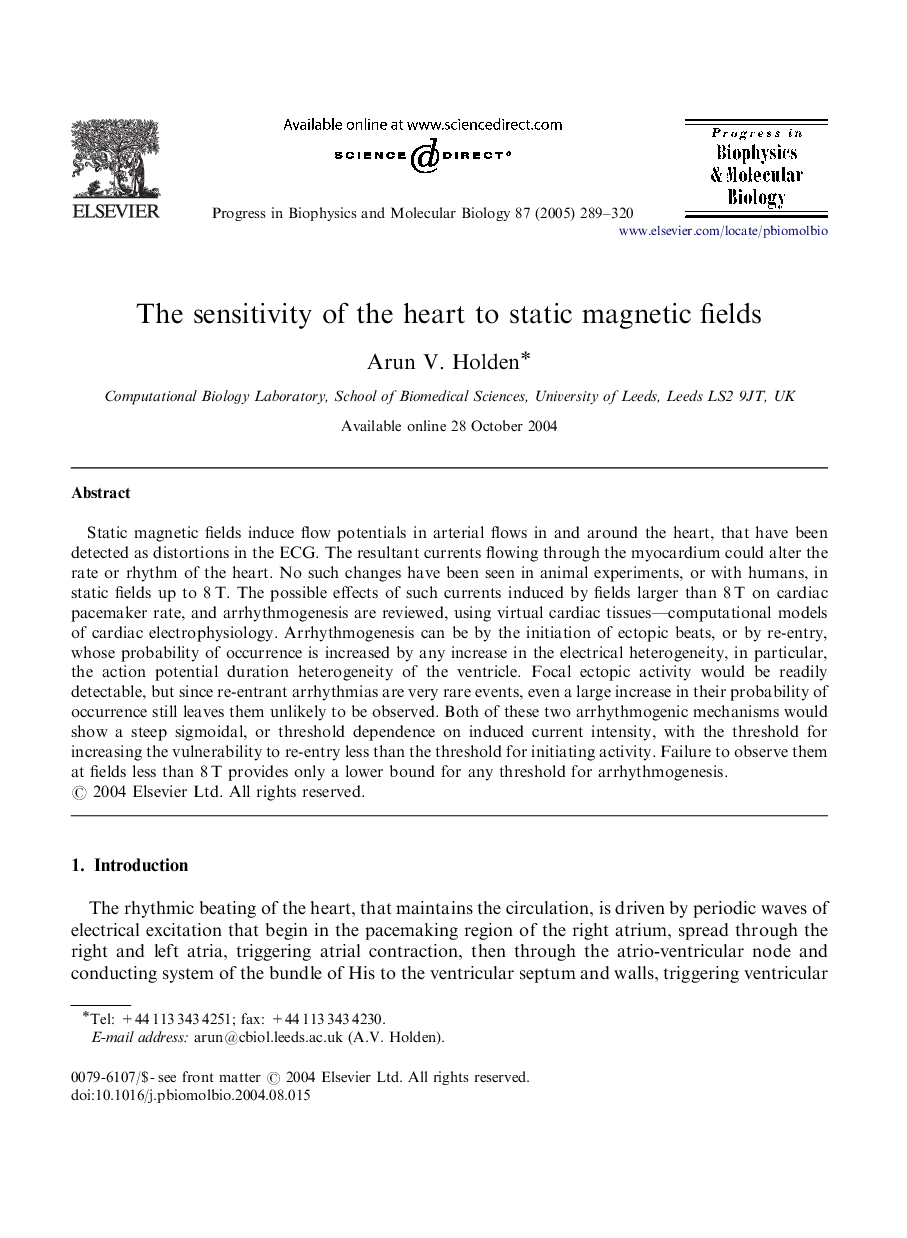| Article ID | Journal | Published Year | Pages | File Type |
|---|---|---|---|---|
| 9900039 | Progress in Biophysics and Molecular Biology | 2005 | 32 Pages |
Abstract
Static magnetic fields induce flow potentials in arterial flows in and around the heart, that have been detected as distortions in the ECG. The resultant currents flowing through the myocardium could alter the rate or rhythm of the heart. No such changes have been seen in animal experiments, or with humans, in static fields up to 8Â T. The possible effects of such currents induced by fields larger than 8Â T on cardiac pacemaker rate, and arrhythmogenesis are reviewed, using virtual cardiac tissues-computational models of cardiac electrophysiology. Arrhythmogenesis can be by the initiation of ectopic beats, or by re-entry, whose probability of occurrence is increased by any increase in the electrical heterogeneity, in particular, the action potential duration heterogeneity of the ventricle. Focal ectopic activity would be readily detectable, but since re-entrant arrhythmias are very rare events, even a large increase in their probability of occurrence still leaves them unlikely to be observed. Both of these two arrhythmogenic mechanisms would show a steep sigmoidal, or threshold dependence on induced current intensity, with the threshold for increasing the vulnerability to re-entry less than the threshold for initiating activity. Failure to observe them at fields less than 8Â T provides only a lower bound for any threshold for arrhythmogenesis.
Related Topics
Life Sciences
Biochemistry, Genetics and Molecular Biology
Biophysics
Authors
Arun V. Holden,
